Contents
Volnushki – mushrooms of the genus Milky, family Russula. They belong to the category of conditionally edible mushrooms that can be eaten after careful and competent processing. Experienced mushroom pickers consider them a delicacy: with proper preparation, they acquire an exquisite taste. They are especially good in salted and pickled form.
For those who are just starting to get acquainted with the intricacies of “silent hunting”, it is important not to make a mistake and not bring a poisonous mushroom from the forest. Many of them have “twins”, they are also present in this type of milkers. Mushrooms are false waves – are they edible or poisonous, how to recognize them – more on that later.
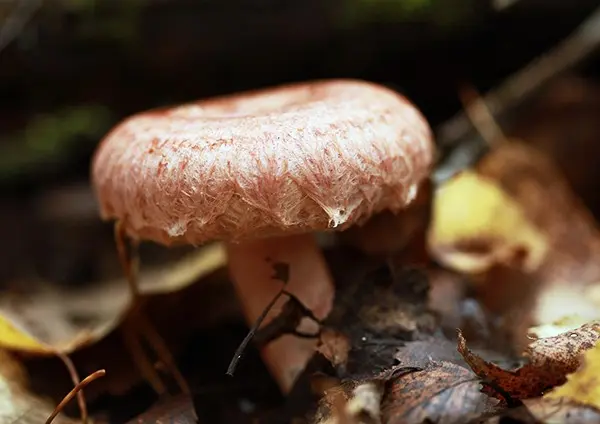
Are there false waves
There are two types of waves – white and pink. Beginners often confuse them with other members of the Milky family. They also grow in birch or birch-mixed forests and prefer places with high humidity.
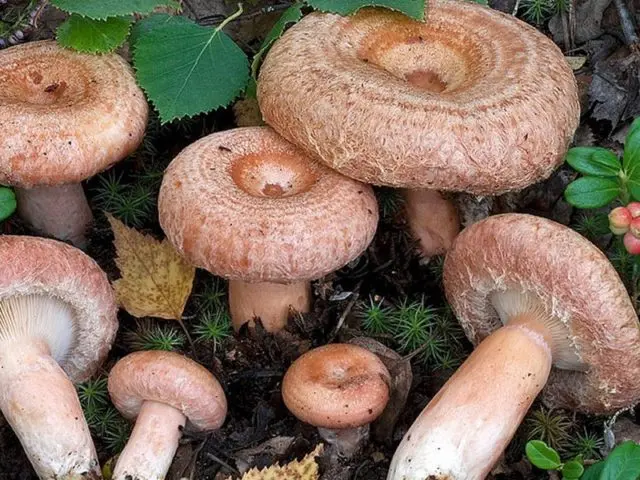
What mushrooms are called “false waves”
False waves are called various types of milkers that have an external resemblance to real waves. They differ in size, color of the cap, the degree of its pubescence, the severity of concentric circles on it. Mushrooms related to false waves also grow in wetlands, deciduous forests. Often real and similar varieties appear side by side, which increases the possibility of errors.
What mushrooms look like waves
Volnushki are often confused not only with milkers, but also with other representatives of the Russula family – mushrooms, milk mushrooms. Most of them are edible, but there are also inedible mushrooms among them. The following are photos and descriptions of false waves, as well as mushrooms similar to them.
Edible mushrooms that look like a wave
Real volushki have a complex of characteristic external features that make it easy to recognize them among similar mushrooms. However, inexperienced quiet hunters often make mistakes during the collection. Photos and descriptions of mushrooms that look like waves will help to avoid this.
Faded or sluggish milkweed (Lactarius vietus)
A fragile mushroom, outwardly similar to a wave, only gray in color. The hat is funnel-shaped, thinly fleshy, 3-8 cm in diameter, light gray with a purple tint. The leg of the false mushroom is the same color as the cap, even, up to 8 cm high, 2 cm wide. White fragile flesh has a strong pungent taste. The milky sap turns green when it dries.
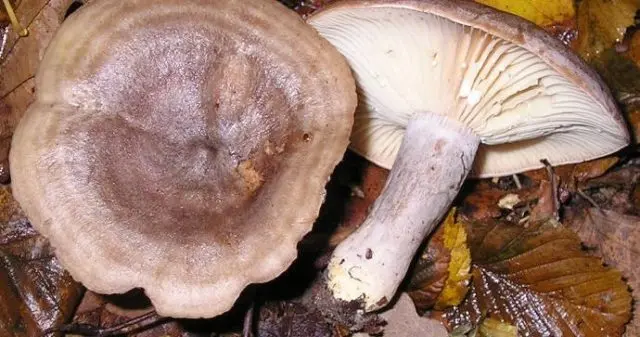
Milky gray (Lactarius flexuosus)
This species is also known as serushka. The cap is convex or convex-prostrate, with wavy, inward-curved edges. It is painted in brownish or pinkish-gray color, on the surface there are faintly visible annular zones. The plates are rare, thick, cream or light yellow, descending along a cylindrical stem. The flesh is white, with a pronounced aroma. The milky juice is white, the color remains unchanged in the air.
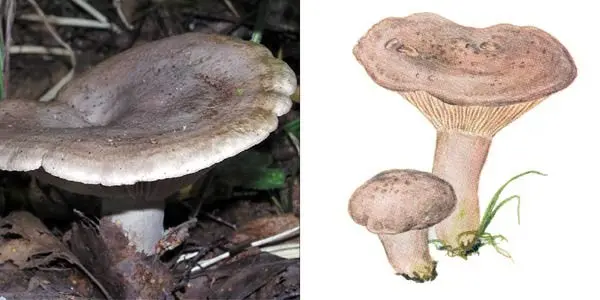
Lilac Milkweed (Lactarius lilacinus)
It grows in broad-leaved forests, mainly under alders. It has a rounded hat with a depression in the middle and thin lowered edges. Its diameter does not exceed 8 cm. The skin of the cap is dry, dull, with a light edge, pinkish-lilac in color, without concentric rings. The plates are thin, adherent, lilac-yellow. The flesh is white or pale pink, fragile, without a pronounced taste or smell. Grows only in September. The milky juice is white, caustic, does not change its properties upon contact with air.
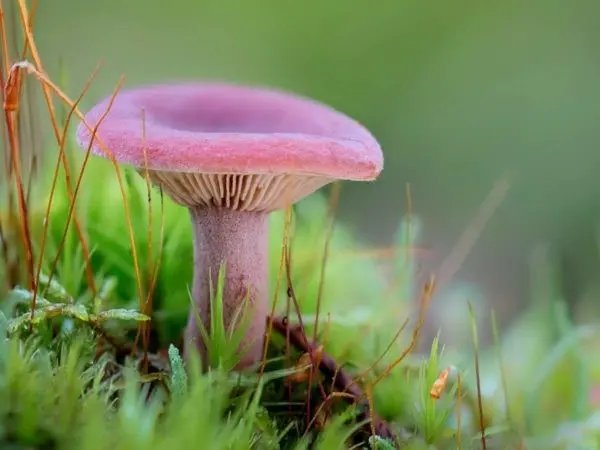
Aspen breast (Lactarius controversus)
A typical representative of the Russula family. Fruiting bodies grow large, the cap can reach 30 cm in diameter. It has a funnel-shaped shape and curved fluffy or even edges. The surface of the cap is milky, sometimes with pink spots, becomes sticky after rain. May become light orange with age. The leg is dense, cylindrical, the same color as the hat. Grows next to poplar and aspen.
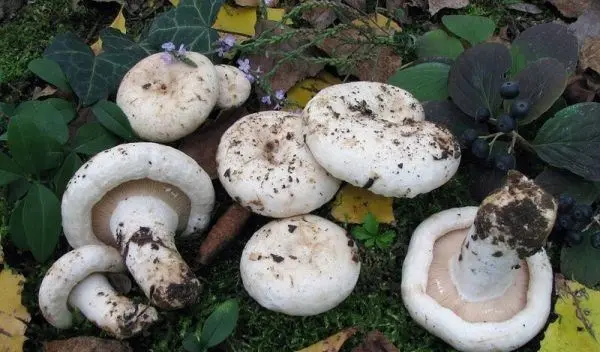
Violin (Lactarius vellereus)
The mushroom has a dense fleshy hat 8-25 cm in diameter with curved or open wavy edges. The skin is covered with a short pile, most often has a white color, but may acquire a yellow or reddish tint. The pulp is white, hard, brittle with a pleasant aroma and spicy taste.
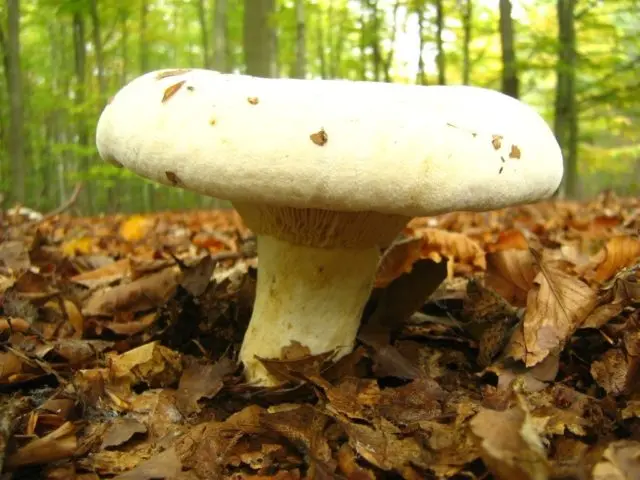
Грузд желтый (Lactarius scrobiculatus)
It looks like a wave of a yellow mushroom called a scraper or wave. The official name is yellow mushroom. The hat is bright or dirty yellow, prostrate, funnel-shaped depressed in the center, with an edge turned down. Its surface may be sticky, woolly or smooth, with concentric zones. The leg is short, thick, with brown spots. The pulp and milky juice of this false wave are white, but turn yellow on the cut.
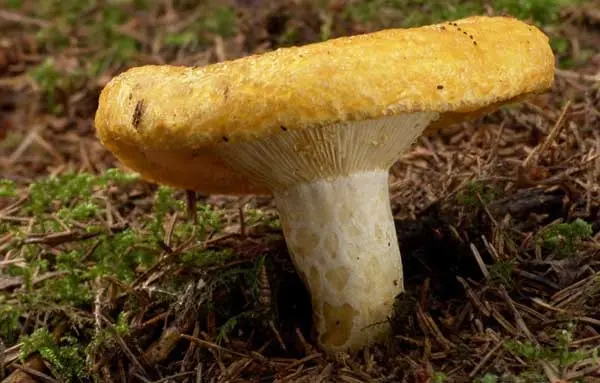
Ryzhiki (Delicious milk)
Mushrooms that look like a wave, only red – the most delicious representatives of the Milky family. The color of mushrooms can be yellow, red-brown, reddish or orange. On a shiny, smooth, slightly damp hat, there are concentric circles. The pulp has a pleasant taste and a light fruity aroma, turning greenish-blue on the cut. Milky juice is colored in various shades of red. Ryzhiki do not need to be soaked before cooking, as they have a pleasant taste.
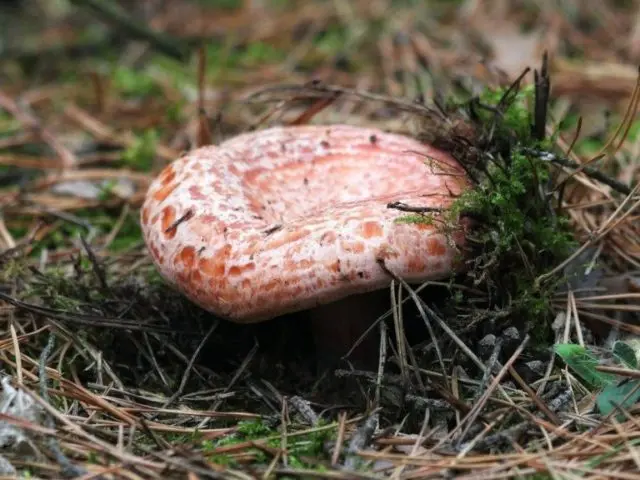
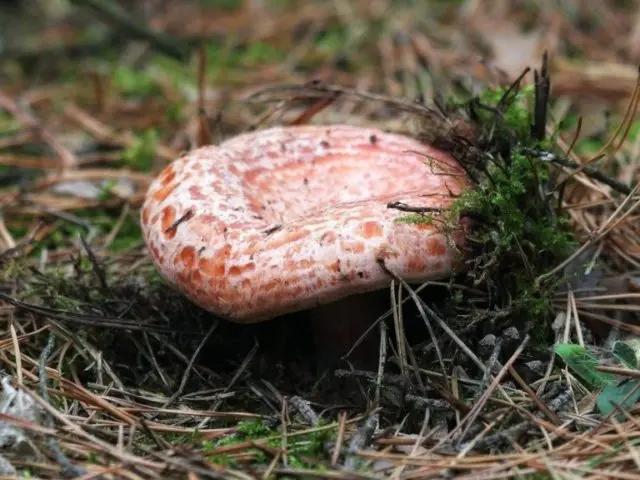
Inedible and poisonous mushrooms, similar to a wave
Among the false waves, there are also inedible mushrooms. They are not poisonous, but because of the low taste and the pungent smell of the pulp, which does not disappear even after soaking, they are not eaten. None of the mushroom-like mushrooms are poisonous. Photos of inedible mushrooms of false waves will help you not to make mistakes during the collection.
Spiny Milkweed (Lactarius spinosulus)
This mushroom is rare, growing in August-October. The hat is flat-convex, with a small depression in the middle. Its surface is dull, dry, scaly, red-pink in color with dark annular zones. The plates are thin, at first fawn, later yellowish. The leg is rounded, hollow inside, dry, smooth. The pulp is lilac, brittle, thin. White milky juice, in contact with air, becomes green.
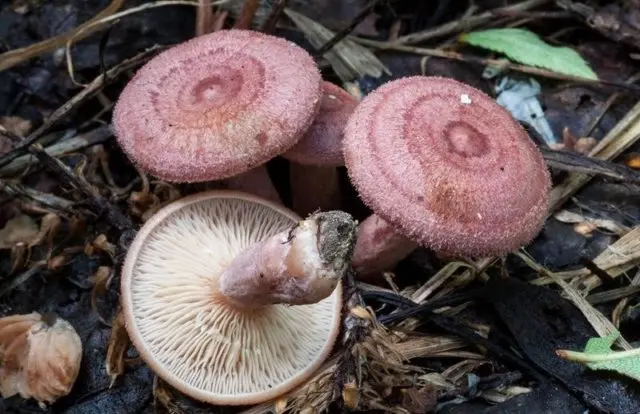
Sticky Milkweed (Lactarius blennius)
The name of the mushroom was due to the sticky surface of the cap. It has a curved down, slightly pubescent edge. The color of the fruiting body varies from grayish to dirty green. The skin has concentric rings. The leg is slightly lighter than the cap, also has a sticky surface. In young specimens, it is made, with age it becomes hollow. White brittle pulp has a sharp peppery taste, turns gray when cut. The milky juice is white, becoming olive green when dry.
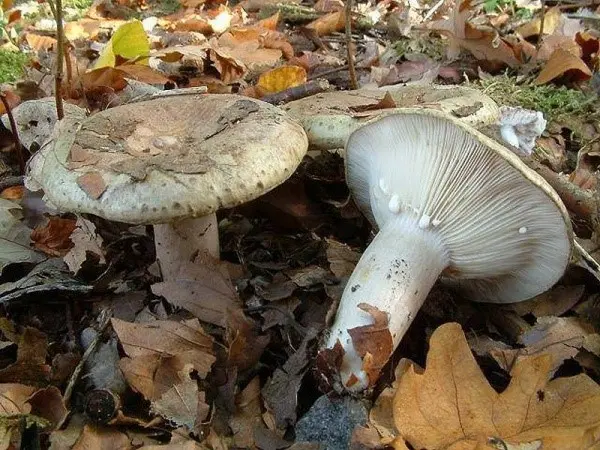
Milky liver (Lactarius hepaticus)
In pine forests there is a fungus that looks like a wave, only brown in color – hepatic lactic. It has a smooth hat, brown-olive. The plates are thin, frequent, pinkish or brownish. The leg is straight, the same color as the hat or slightly lighter. Milky liver is characterized by brittle, extremely caustic, creamy or brown flesh.
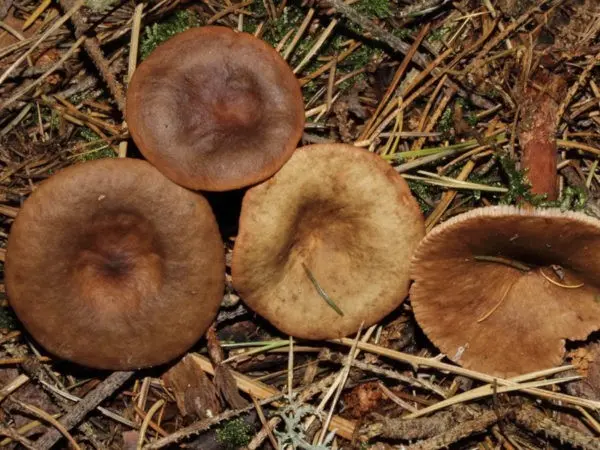
How to distinguish volushki from other mushrooms
In order to distinguish a real mushroom from twins, you need to know the characteristic signs, thanks to which they cannot be confused.
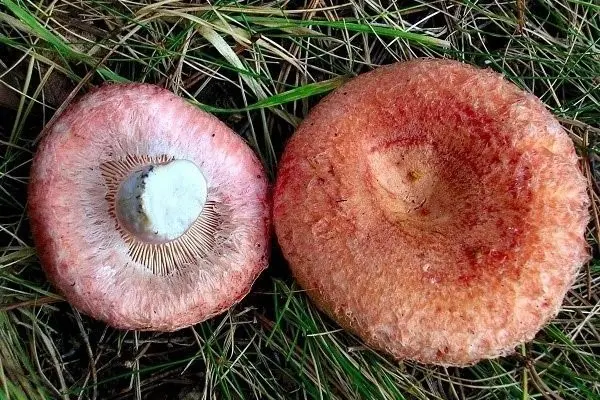
The pink wave has:
- convex at first, and later flat with a recess and a hat wrapped down with an edge;
- coarse thick villi on the cap are arranged in concentric circles;
- the surface of the leg is covered with fluff;
- the skin is slightly mucous, darkens on contact.

The white variety differs from the pink in smaller sizes. Its distinguishing features:
- cap densely pubescent, concentric rings absent;
- the leg may have a smooth or slightly fleecy surface;
A feature that unites both types of real waves: white pulp and milky juice do not change color when exposed to air. The photos and descriptions offered above will tell you how to distinguish false waves from real ones.
How to distinguish a wave from a toadstool
Pale grebe is a very toxic fungus. Eating it is fatal, so it is very important to be able to accurately recognize it. Characteristic external signs of toadstool:
- the cap of the pale grebe has a bell-shaped or flat shape;
- plates under the hat are white, sometimes with a greenish tint;
- the toadstool leg is thin and long;
- the leg of the pale toadstool grows from the volva – a special formation at the root, similar to an egg;
- under the cap of a poisonous mushroom there is a ring – a kind of “skirt”, but over time it can collapse and disappear;
- the toadstool completely lacks a forest, mushroom smell;
- the toadstool does not darken when broken;
- the fruiting body of the toadstool is not damaged by parasitic insects.

Neither true representatives of the species nor false ones possess these traits.
Conclusion
False mushroom mushrooms are divided into edible and inedible. With skillful preparation, all of them can be eaten without fear of getting food poisoning. Going to the forest, you need to follow the golden rule of mushroom pickers: if you are not sure about the edibility of a mushroom, it is better to throw it away. If it seems that the fungus looks like a wave, but upon closer examination it is clear that it is tubular, we can say for sure that it does not belong to either false or true waves, and also does not belong to the Russula family and the Milky genus.









